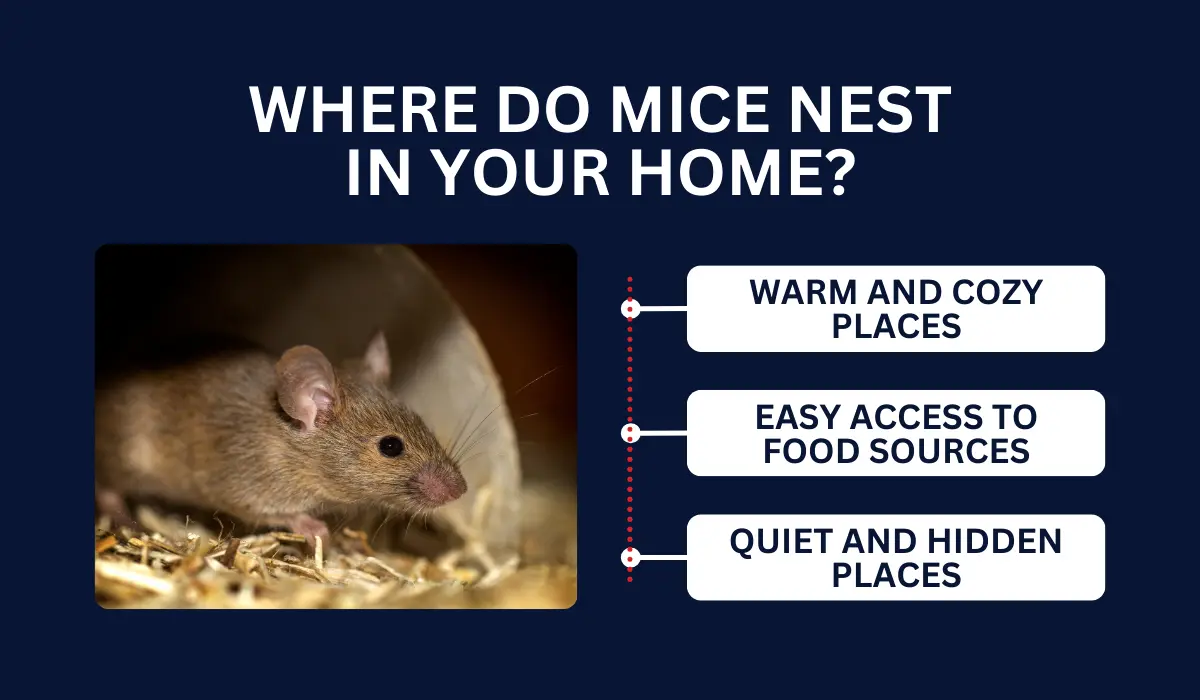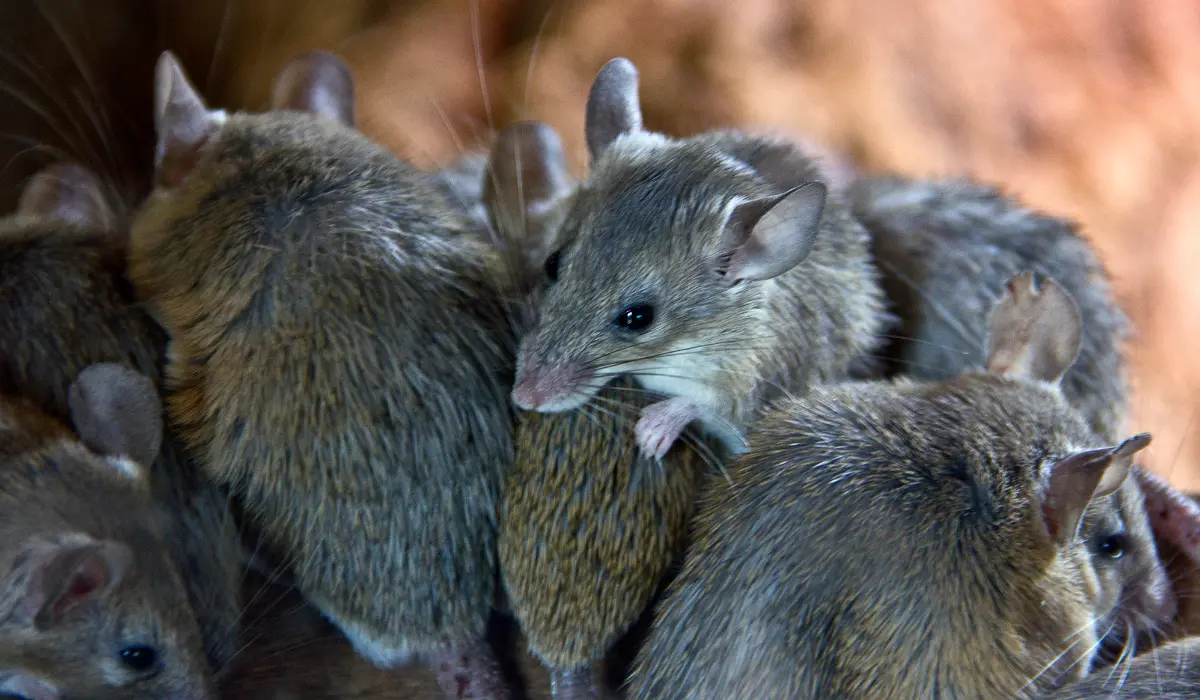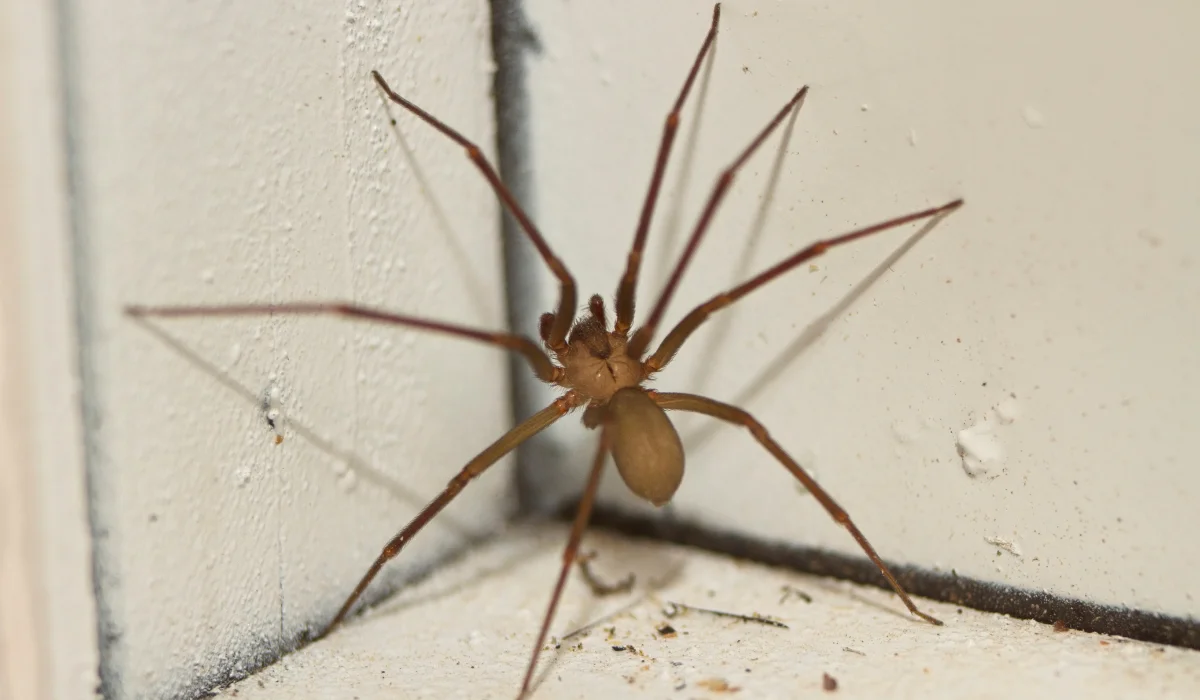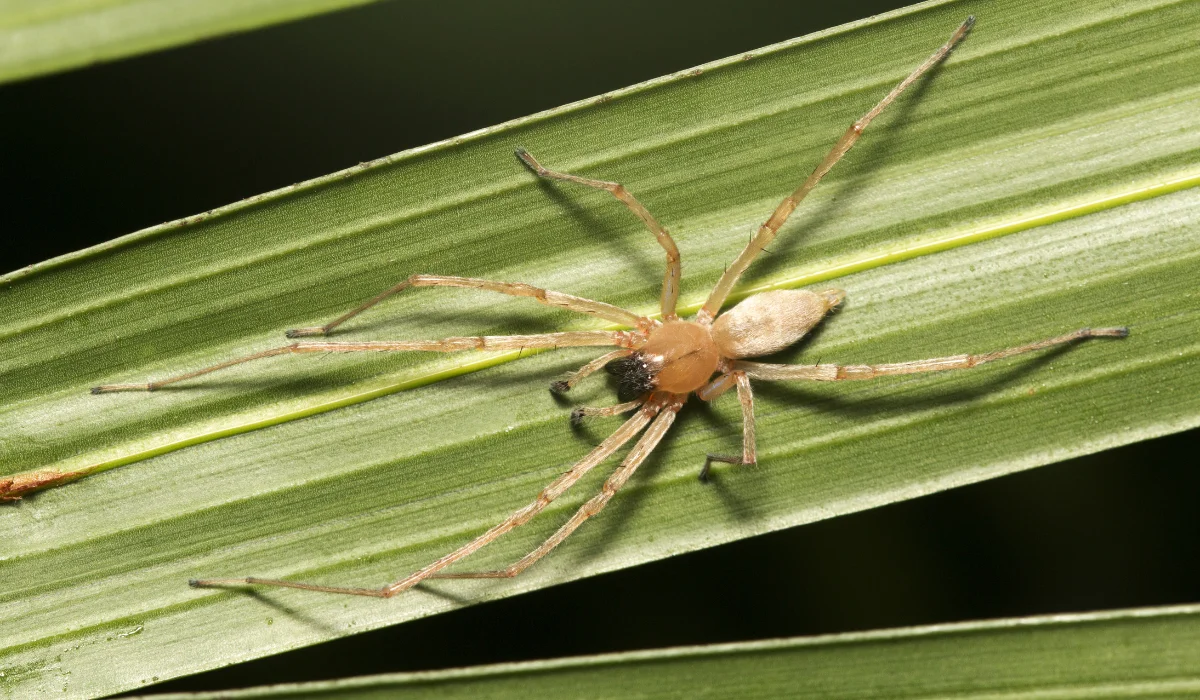Mice are sneaky little creatures that can find their way into just about any part of your home. They commonly nest in walls, attics, and basements where it’s warm and safe from predators.
Curious about what other hidden nooks they might be choosing? Keep reading to discover all the surprising locations they might be nesting in your home.
Key Takeaways
- Mice prefer nesting in warm, cozy places like attics or basements, using materials like cardboard for their nests.
- Kitchens attract mice due to easy access to food, so they often hide behind appliances and inside cabinets.
- Mice nests are made from shredded materials in dark, secluded areas, such as behind appliances or inside wall voids.
- To prevent mice infestations, seal entry points, maintain cleanliness, use natural deterrents, and hire pest control experts for severe infestations.
WHERE DO MICE NEST IN YOUR HOME?

Warm and Cozy Places
Mice look for warm, cozy spots that provide comfort and protection. Attics, basements, and even garages (in warmer climates) can be prime locations.
Female mice, in particular, often pick areas near the water heater to build nests and rear their young.
Entry points like gaps in the walls or around baseboards make it easy for them to get inside. They commonly use cardboard boxes, insulation, and pieces of fabric to make their nests comfortable.
Easy Access to Food Sources
Mice love kitchens and rooms where food is available, such as pantries and storage areas. They are frequently found nesting near food sources like kitchen cabinets and appliances.
Due to the warmth and food crumbs, dishwashers, ovens, and refrigerators can also be their favorite spots. They may scurry through cabinets and under kitchen appliances, looking for food wrappers and pet food.
Quiet and Hidden Places
Mice seek out quiet, hidden spots where they won’t be disturbed. These can be within walls, behind large pieces of furniture, or in seldom-used rooms.
Like urban hoods, which provide cover and community, various hidden spots within your home can be perfect nesting grounds for mice.
These domestic ‘hoods,’ such as wall voids behind drywall, crawl spaces, and even cluttered closets, offer the quiet and security these rodents crave for setting up their nests.
HOW TO IDENTIFY WHAT A MOUSE NEST LOOKS LIKE
Identifying signs of an infestation early involves spotting house mouse nests. Here’s how to identify it:
- Check dark, secluded areas where mice prefer to hide, such as behind appliances, inside wall voids, attics, or under furniture.
- Look for nests made from shredded materials like paper, fabric, insulation, wood chips, or plant debris.
- Identify the size, which can be the size of a golf ball to slightly larger (about 4 to 6 inches), and note the loosely woven, spherical shape.
- If possible, use a flashlight to visually confirm the presence of a nest, baby mice, and adults in suspected areas.
OTHER SIGNS OF A MICE INFESTATION
Whether it’s a deer mouse or a field mouse you’re dealing with, you must know other signs of its presence beyond the nest. Watch out for any of these indicators:
| Signs | How to Know |
|---|---|
| Sounds | Listen for squeaking or scratching that indicates their presence. |
| Droppings | Look for small, dark, seed-like mouse droppings near potential nesting sites as a sign of infestation. |
| Pet Behavior | Monitor pets for unusual behaviors like barking or pawing at areas where mice might be present. |
| Odors | Musty odors in confined spaces, typically from urine and droppings. |
| Physical Damage | Check for gnaw marks on furniture or packaging, indicating mouse activity. |
| Dead Mice | Dead mice near nesting areas can suggest a severe infestation, aiding in selecting extermination methods. |
HOW TO PREVENT MICE NESTING IN YOUR HOME
Understanding how to prevent mice from nesting effectively can help maintain a safer, cleaner living environment.
To deter them from taking up residence in your house, consider these strategies:
- Seal access points with steel wool to fill holes and gaps around pipes, vents, and doors.
- Avoid leaving out pet food, peanut butter, and sweet and savory options overnight on countertops.
- Respond promptly to signs of infestation by looking for droppings, gnawed nesting materials, and nests.
- Keep common places, such as attics, basements, and garages, clutter-free to make them less appealing to mice.
- Be aware of health risks like hantavirus by taking preventative measures to keep your home mouse-free and protect your health.
WHEN TO CALL A PROFESSIONAL
Knowing when to seek professional help is essential for effective mouse control. If mice keep returning despite your efforts, pest control professionals can offer more robust solutions.
Whether you’re in Baton Rouge or New Orleans, seeking expert help should be easy. For immediate intervention for a severe infestation, let Lajaunie’s mice control specialists tailor a solution that’s right for your home.
For more information about the areas we service, visit our location page.
 By: LaJaunie's Pest Control
By: LaJaunie's Pest Control 


